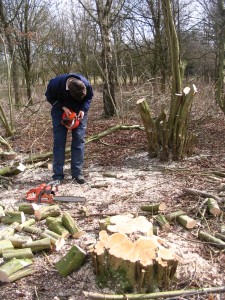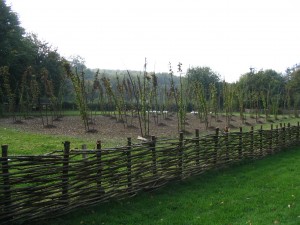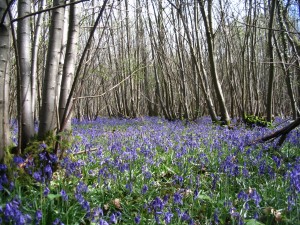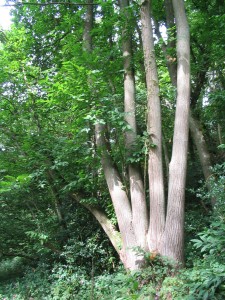Tom’s previous blog quite rightly warned that we shouldn’t be too quick to cut down trees. Well what have I been up to this winter? I’ve been out with the chainsaw gathering fuel for my wood burner and bean polls for the allotment! But wait, hush your gasps, I’ve not been massacring the majestic mature trees that Tom was championing but instead partaking in the ancient practice of coppicing. If you are not familiar with the term, coppicing involves cutting a tree down to a stump and then allowing it to regrow into multiple stems. In time these new stems can be cut down and so the cycle can continue. Broadleaved trees respond best to this method.

To be quiet honest with you I leave the chainsawing to my other half and I mainly do the brash clearance and the wood stacking. But I have been known to wield the axe!
It’s heavy work to produce a wood pile which after 2 to 3 years of drying will be keeping us warm through the winter months…as my Dad always says: coppicing warms you twice – once in the cutting and again in the burning!

Coppicing has many benefits and through the ages has been used to produce fuel, fencing, building materials, baskets etc. and it’s not just useful to humans! The sunlit glades produced by coppice rotation are also great for wildlife. Our native bluebell particularly enjoys establishing itself under coppice stools.

As the Landscape historian Oliver Rackham succinctly puts it ‘when a wood disappears one should not ask ‘why was it cut down’ … but ‘why did it not regrow’’?
However I will leave you with a conundrum: should we take our chainsaw to this majestic mature sweet chestnut stool (pictured below)? Maybe this specimen is worth keeping?
